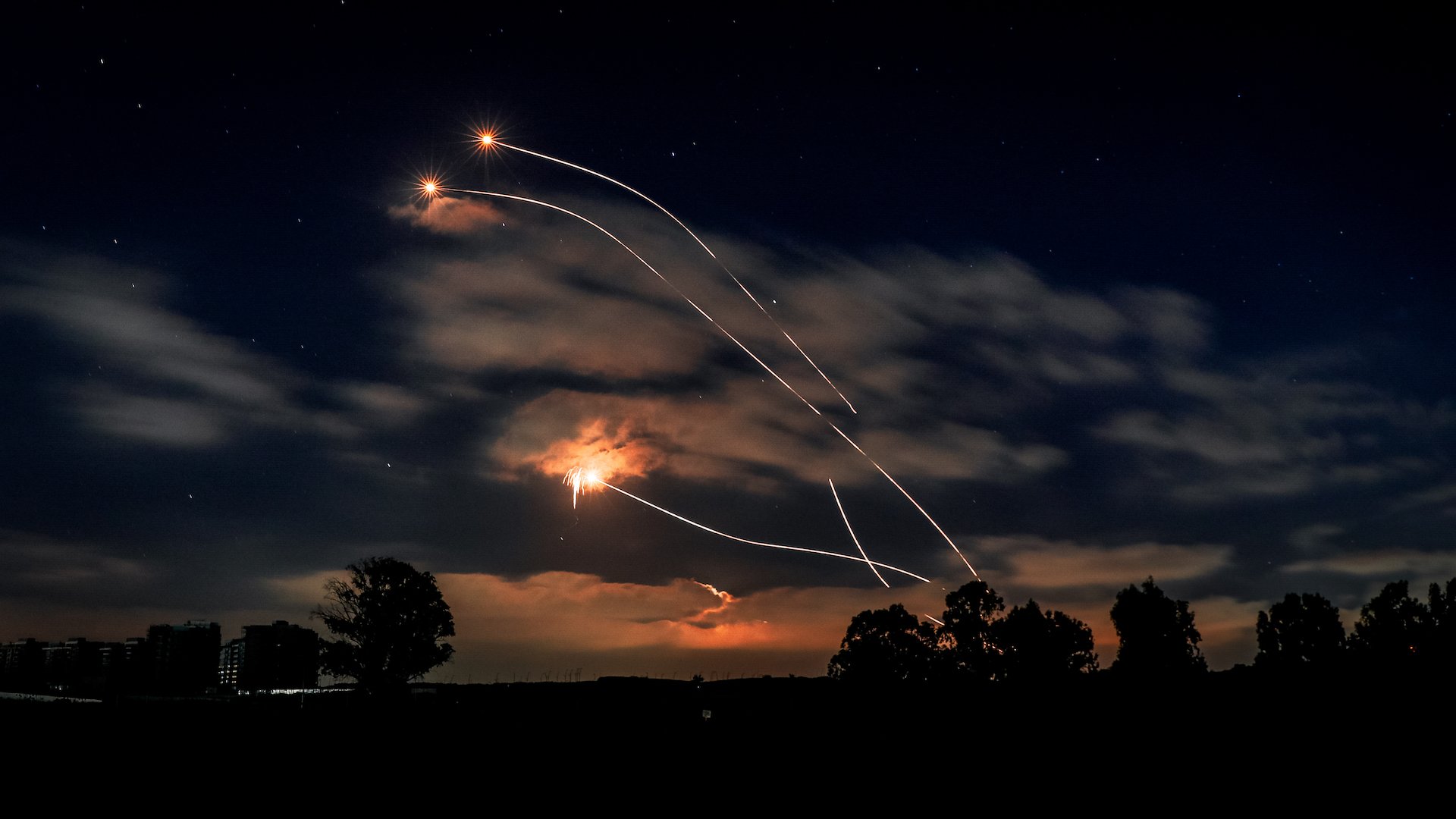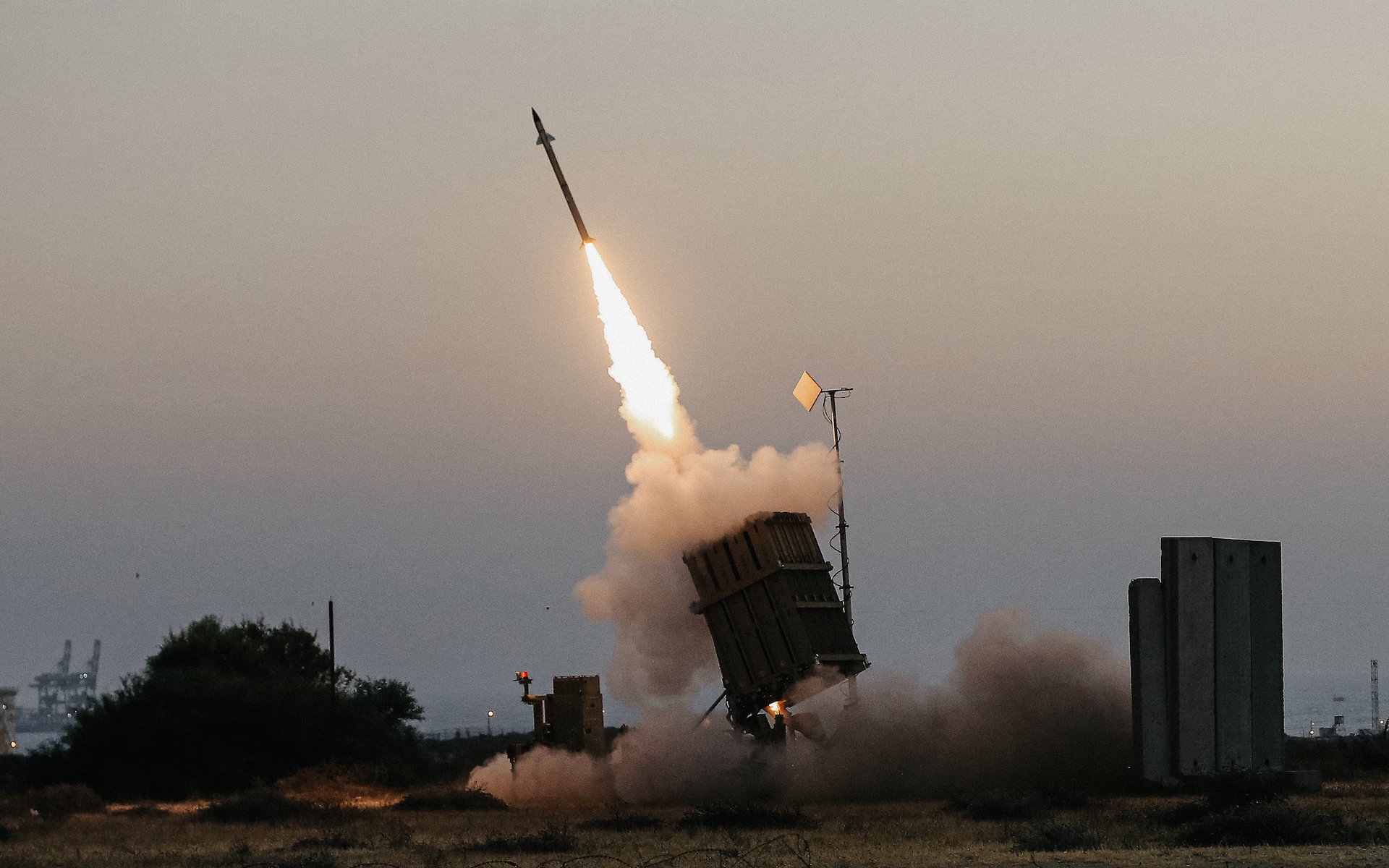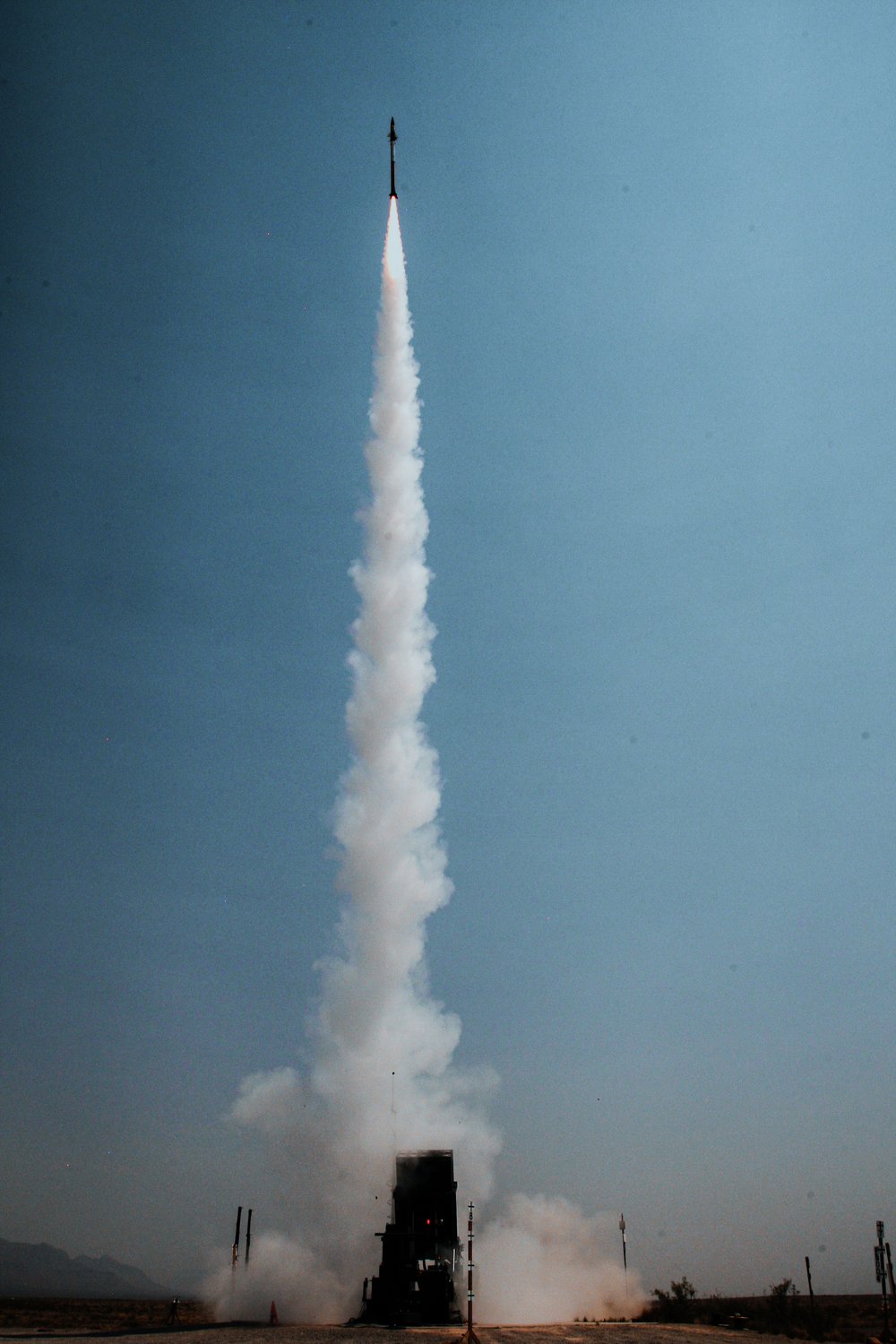
Iron Dome launches missiles to intercept rockets fired from the Gaza Strip on May 13, 2021. AP photo by Ariel Schalit.
In 2006, after living in Maryland for two years, Chanoch Levin returned to his native Israel. While stateside, Levin, a weapons engineer, had worked as a consultant to the US Army, helping develop countermeasures against roadside bombs in Iraq. Now back home, he’d soon find himself working to combat a much different kind of threat as the lead engineer on a project that would come to be known as Iron Dome.
The 2006 Lebanon War, fought between Israel and the Lebanese militant group Hezbollah, began within weeks of Levin’s homecoming. During the 34-day conflict, Hezbollah fighters launched nearly 4,000 rockets from southern Lebanon over the Israeli border. Many of those rockets struck populated areas, killing dozens of civilians and causing more than a quarter of a million people to flee their homes.
Levin, who lived with his family in northern Israel, where most of the shelling occurred, survived the war unscathed, but the experience left him shaken. The weapons engineer in him understood that Israel urgently needed to improve its air defenses. So when a government-owned company called Rafael Advanced Defense Systems offered him a job doing just that, he accepted without hesitation.
Related: The US Is Sending the NASAMS to Ukraine — but What Is It?

Iron Dome launches a missile from Ashkelon, Israel, to intercept a rocket fired from the Gaza Strip on July 5, 2014. AP photo by Tsafrir Abayov.
What Is Iron Dome, and How Does It Work?
The project that Rafael hired Levin to spearhead ultimately produced Iron Dome, a first-of-its-kind air-defense system. Mobile, sophisticated, and expensive, at roughly $100 million per battery in 2012 dollars, the system was specifically engineered to neutralize whole barrages of unsophisticated short-range missiles.
In 2011, Iron Dome took down its first enemy rocket. The system has intercepted thousands more in the years since and boasts a roughly 90% success rate to date. So how does it work?
One way to describe it is like a force field from a science fiction movie (more specifically, for all of you Frank Herbert nerds, like the Holtzman shield in Dune). Made up of multiple batteries, each equipped with three to four launchers that can hold up to 20 Tamir interceptor missiles, it is designed to bring down short-range rockets and artillery shells bound for populated areas.

Israeli police officers and firefighters inspect a car damaged by shrapnel from a missile fired by militants in the Gaza Strip. The Iron Dome air-defense system intercepted the missile over Holon, Israel, on Nov. 18, 2012. AP photo by Oded Balilty.
Like many other air-defense systems, a fully operational Iron Dome battery has three main features: radar, a command-and-control unit, and truck-towed launchers armed with interceptor missiles.
Iron Dome relies on ELM 2084 Multimission Radar to detect incoming short-range rockets and then track them through the sky. The ELM 2084 can detect more than 1,000 targets simultaneously. Key information about the target, such as their speed and trajectory, is transmitted to Iron Dome’s battle management control system, or BMC, which then activates its launchers to fire the necessary number of Tamir interceptor missiles to destroy the entire salvo. Sensors and fins help to maneuver the interceptor toward an incoming projectile before its proximity-triggered warhead explodes and takes the incoming down with it.
Selectivity is also key to Iron Dome’s high success rate. As of early 2021, Israel had 10 operational batteries. That means the Israelis could possibly have hundreds of missiles ready to fire at any given time, but they don’t launch them willy-nilly. The system doesn’t target every incoming rocket and artillery shell that enters Israel’s air space, only the ones bound for populated areas. This way, Iron Dome doesn’t drain tens of thousands of dollars taking down rockets headed for empty desert.
Related: The M203 Grenade Launcher: Farewell to the Infantry’s ‘Little Friend’

The US Army tests an Iron Dome battery at White Sands Missile Range, New Mexico, in June 2021. US Army photo by Darrell Ames.
What Is the Air-Defense System’s Role?
Historically, Hezbollah has fired rockets into northern Israel from southern Lebanon. Hamas and the Islamic Jihad regularly strike Israel from the Gaza Strip. Though the weapon systems used by these rogue militant groups are rudimentary and inaccurate, they have amassed enough rocket power to hit most of Israel and inflict a lot of damage.
That is where Iron Dome comes into play. It addresses the very real, albeit specific, threat of short-range missile barrages. Yet this is a part of the world that has an abundance of other threats, and Iron Dome is not an all-encompassing air-defense system. For example, one battery can protect roughly 60 square miles — an area slightly larger than Jerusalem — but it can only intercept projectiles once they are within a range of 45 miles.
Because of its limitations, Iron Dome is only one cog in Israel’s multi-layered air and missile defense apparatus. Systems such as David’s Sling and the Arrow family of anti-ballistic missiles, which are designed to neutralize mid-to-long-range threats, are utilized in conjunction with Iron Dome to form a more complete force field.

US Air Force Brig. Gen. Jeremy Sloane, commander of the 36th Wing, meets with Army soldiers assigned to the 38th Air Defense Artillery Brigade during an operation to test Iron Dome at Site Armadillo, Guam, on Nov. 17, 2021. US Air Force photo by Staff Sgt. Divine Cox.
Does the US Have an Iron Dome?
The US, in fact, now possesses two Iron Dome batteries. (For years, only Israel had the complete system.) The two batteries owned by the US were purchased by the Army in 2019 as a stopgap to defend against slow-moving cruise missiles. The first battery was delivered in late 2020, and the second a couple of months later. As of early 2023, both are located at Joint Base Lewis-McChord in Washington.
Around the time that the batteries were purchased, the Army also considered Iron Dome for its permanent defense against cruise missiles. However, the US ultimately opted for another system, in part because the manufacturer wouldn’t give up Iron Dome’s source code. Without the code, the US couldn’t fully integrate the weapon into its air and missile defense architecture.
More than likely, Israel intends to forever keep certain parts of Iron Dome’s technology a secret. Which is understandable. If certain information fell into the wrong hands, Israel’s enemies might figure out how to defeat Iron Dome. Then, engineers like Levin would have to go back to the drawing board and figure out a new way to combat a threat that doesn’t seem likely to go away any time soon.

Jenna Biter is a staff writer at Coffee or Die Magazine. She has a master’s degree in national security and is a Russian language student. When she’s not writing, Jenna can be found reading classics, running, or learning new things, like the constellations in the night sky. Her husband is on active duty in the US military. Know a good story about national security or the military? Email Jenna.
BRCC and Bad Moon Print Press team up for an exclusive, limited-edition T-shirt design!
BRCC partners with Team Room Design for an exclusive T-shirt release!
Thirty Seconds Out has partnered with BRCC for an exclusive shirt design invoking the God of Winter.
Lucas O'Hara of Grizzly Forge has teamed up with BRCC for a badass, exclusive Shirt Club T-shirt design featuring his most popular knife and tiomahawk.
Coffee or Die sits down with one of the graphic designers behind Black Rifle Coffee's signature look and vibe.
Biden will award the Medal of Honor to a Vietnam War Army helicopter pilot who risked his life to save a reconnaissance team from almost certain death.
Ever wonder how much Jack Mandaville would f*ck sh*t up if he went back in time? The American Revolution didn't even see him coming.
A nearly 200-year-old West Point time capsule that at first appeared to yield little more than dust contains hidden treasure, the US Military Academy said.












